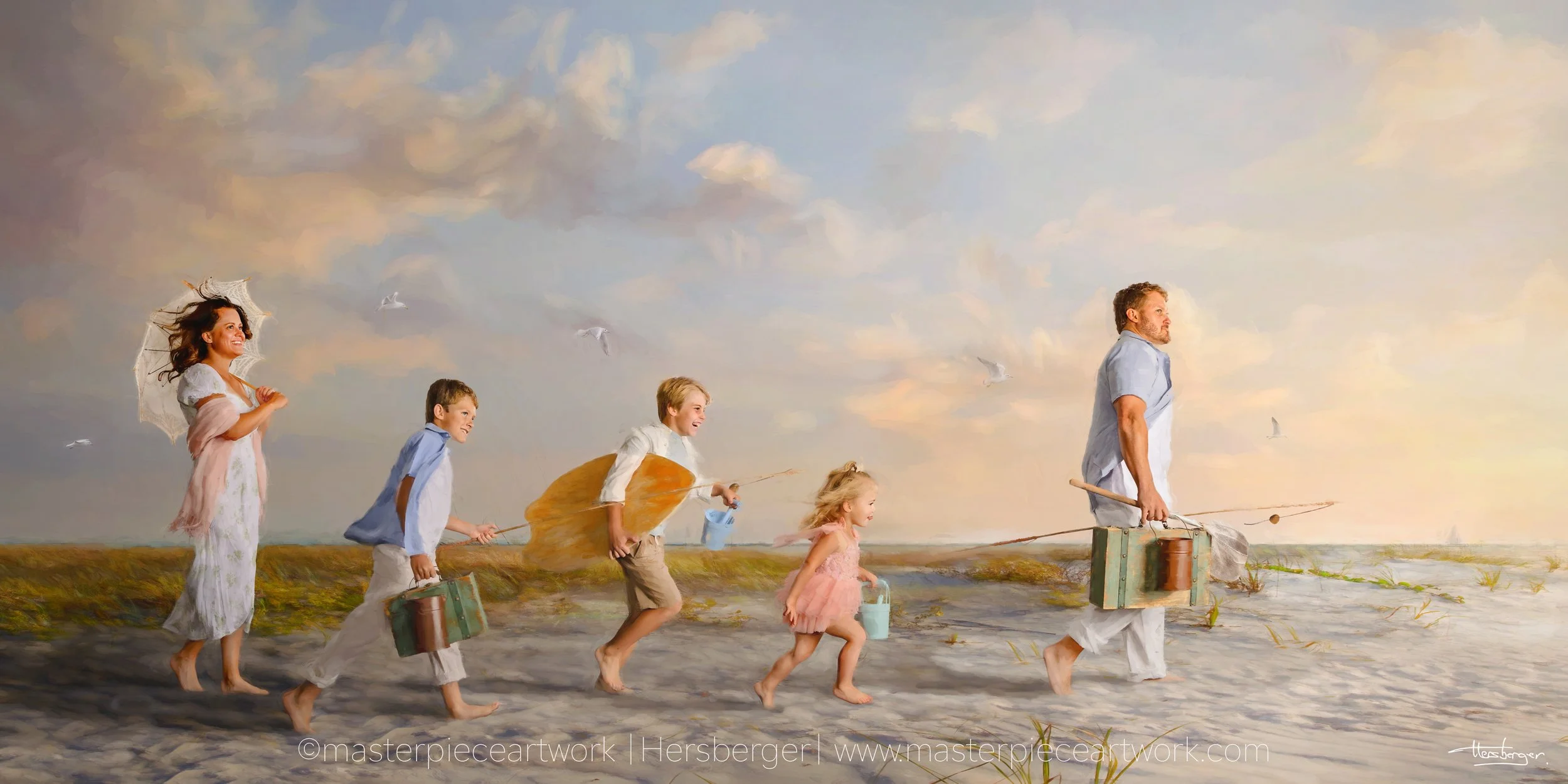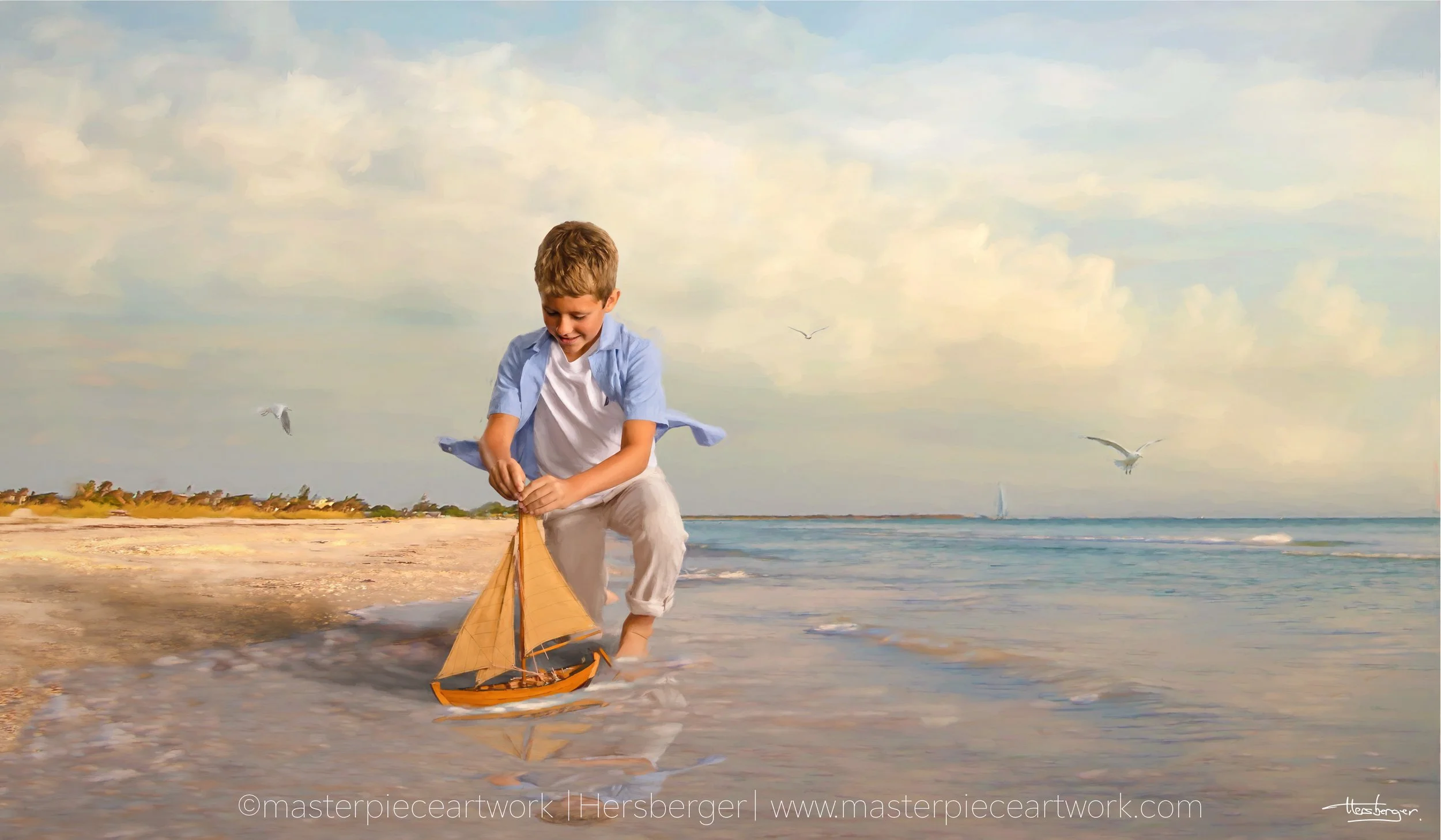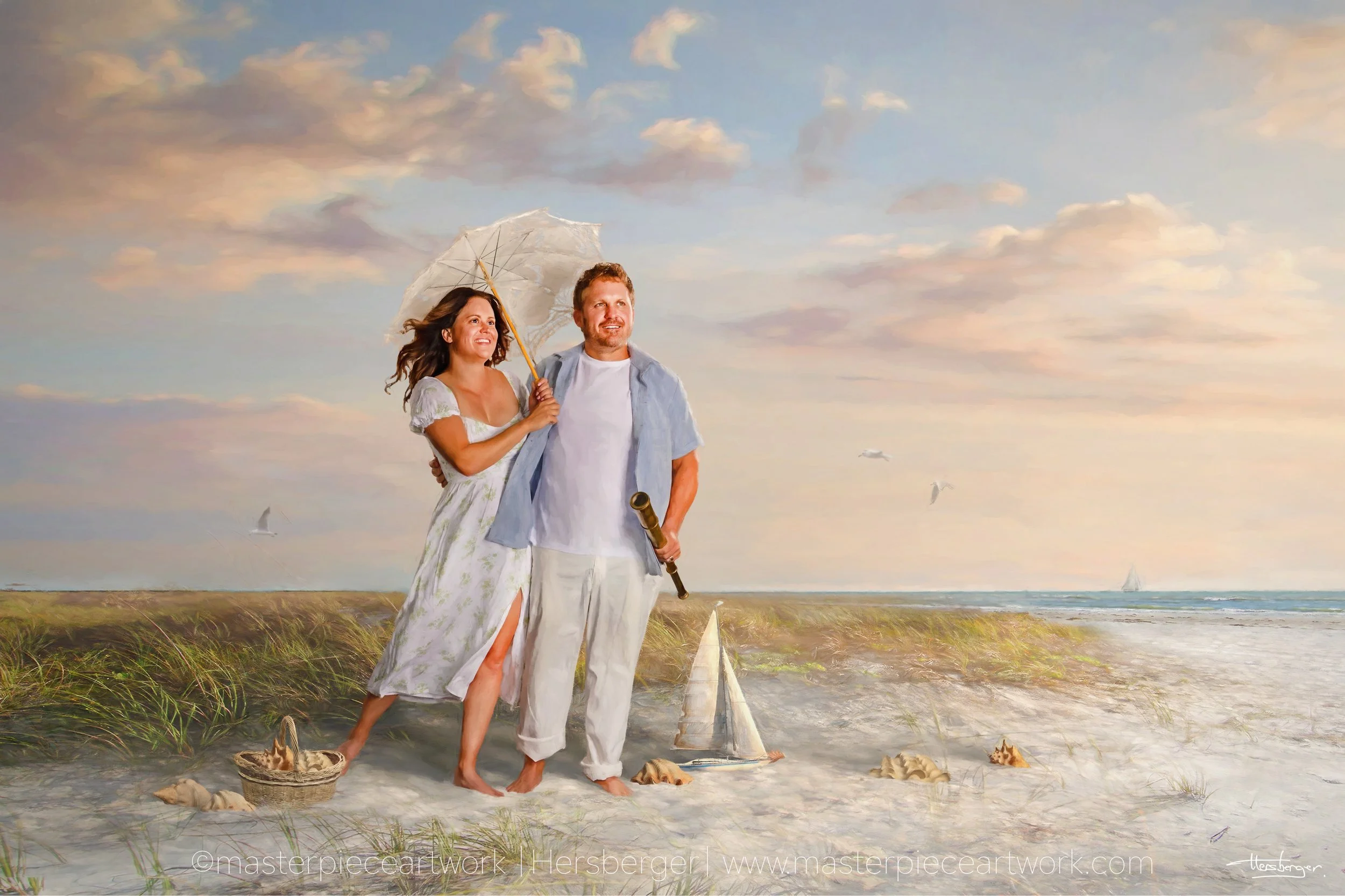Exploring Fine Art Photographers
Introduction to Fine Art
Fine art photography is more than the simple act of capturing an image; it is a distinctive and imaginative form of artistic expression. Blending technical expertise with a personal vision, it transforms the camera into a brush, creating works that stand alongside painting, sculpture, and other forms of fine art.
Fine art photographers are often inspired by their surroundings, experiences, or other works of art, drawing motivation that fuels their creative process.
Unlike documentary or commercial photography, fine art photography is rooted in intention. The goal is not merely to record what is seen, but to communicate emotions, ideas, and perspectives that inspire reflection. Each photograph is carefully crafted through skilled and meticulous processes, reflecting the artist's vision and attention to detail. Fine art photographs are intentionally created to be visually captivating, intellectually engaging, and emotionally moving.
To achieve this, fine art photographers, like Ela and Larry Hersberger, rely on mastery of essential photography skills and traditional masters techniques. Perfect composition, lighting, and harmony is a must in Fine Art photography. Through this foundation, they are able to transform moments into enduring fine artwork.
History and Influences
The story of fine art photography begins with the pioneers of the medium. Visionaries such as Alfred Stieglitz and Ansel Adams, both of whom were closely associated with New York, elevated photography beyond documentation, proving it could stand as fine art. Studying the work of great photographers has shaped the evolution of fine art photography, as artists have learned from the masters to refine their own vision. They experimented with innovative processes and styles, expanding the possibilities of what photography could express. The evolution of the photographic process has also played a crucial role, allowing artists to explore new techniques and materials that have continually redefined the medium.
Over time, movements like modernism, surrealism, and abstract expressionism influenced photographers, blending visual experimentation with artistic philosophy. The development of fine art photography has also been shaped by the influence of other artists and movements, as photographers analyze and incorporate diverse ideas and techniques. Today, the tradition continues, with contemporary artists like Ela and Larry Hersberger embracing new technologies and digital tools to push the boundaries of expression.
Nature, architecture, and the human condition remain enduring sources of inspiration—reminding us that fine art photography is as diverse as the world itself.
Styles and Techniques
Fine art photography encompasses a wide range of subjects and styles. Landscapes, portraits, still life, and abstract compositions all find a home within this genre. The creation of pictures and photos is the primary visual output of fine art photographers, serving as the main medium for artistic expression. The diversity extends to technique, with photographers exploring black and white, color, and digital manipulation to achieve their vision.
Fine art photos are defined by their artistic and conceptual qualities, setting them apart from other types of photography through their focus on subject matter, technique, and the ideas they convey. Developing a unique style is essential for fine art photographers, as it distinguishes their work and personal vision. Innovative methods—such as long exposure, multiple exposure, and intentional camera movement—allow artists to shape reality into something new. Beyond the act of taking the photograph, fine art often involves thoughtful editing, post-processing, and printing, ensuring that the final piece embodies the artist’s intention.
Every element—light, shadow, space, and composition—becomes a deliberate choice, much like brushstrokes on a canvas. The use of frames, both in the physical presentation and in the compositional boundaries within the image, plays a crucial role in highlighting the artwork. Dedicated photographic practice is vital for refining technique and developing a strong artistic vision.
Commercial vs. Fine Art Photography
At its core, the difference between commercial and fine art photography lies in purpose. Commercial photography seeks to market, persuade, or sell, while the fine artist creates work with artistic intention, prioritizing creativity, originality, and emotional depth.
This distinction frees fine art photographers from external constraints, allowing them to experiment and explore. For example, fashion photography sometimes overlaps with fine art photography in terms of style and presentation, blurring the lines between commercial and artistic goals. Magazine photography, on the other hand, is primarily commercial and journalistic, aimed at storytelling and mass distribution rather than artistic expression. Similarly, photojournalism is focused on documenting objective reality and telling stories, which differs from the subjective vision and expressive intent of fine art photography.
Yet, the boundary is not rigid. Many contemporary photographers blend elements of both, creating images that are aesthetically powerful and conceptually meaningful. Fine artists approach photography with a focus on artistic elements, unique style, and emotional expression, setting them apart from commercial photographers who prioritize client objectives and market appeal.
The Decisive Moment
The French photographer Henri Cartier-Bresson famously coined the phrase “the decisive moment.” In fine art photography, this refers to capturing that singular instant when subject, light, and composition align in perfect harmony. The decisive moment is intentionally created by the photographer, who brings their artistic vision and intent to the scene.
It is a fleeting intersection of intuition, timing, talent and artistry. For many fine art photographers, patience and anticipation are as important as technical skill. Capturing decisive moments can reveal profound aspects of people's lives and identity, offering insight into their experiences and the social or cultural forces that shape them. This pursuit of the decisive moment speaks to the heart of fine art photography—it is not about recording the obvious, but about waiting for the moment when truth and beauty reveal themselves.
Fine Arts and Photography
Photography today holds a respected place within the broader realm of fine arts, complete with its own history, movements, and philosophies. Its interplay with other artistic mediums—painting, sculpture, literature—continues to enrich and expand its possibilities. Fine art photography is often showcased in exhibitions and galleries, where curated collections highlight the unique vision of each artist.
Many fine art photographers draw upon these traditions, while others push the medium in entirely new directions. The output of these photographers is recognized as fine art work, reflecting both aesthetic and conceptual qualities. Numerous articles and academic writings discuss the evolution and impact of fine art photography, emphasizing how the artist shapes the direction and meaning of the medium. Certain photographic series or bodies of work are called specific names to reflect their conceptual focus, such as the Bechers' "anonymous sculptures." This dialogue between art forms ensures that fine art photography remains a dynamic, evolving practice.
At its best, fine art photography does not simply show us the world—it reimagines it, inviting us to see with fresh eyes.
✨ At Masterpiece Fine Art Photography Studio, we believe every portrait, every image, and every story has the potential to be transformed into art. Through careful craftsmanship and creative vision, we capture more than photographs—we create timeless fine artwork.
Creating a Body of Work
For any fine art photographer, creating a body of work is a defining step in their artistic journey. A body of work is more than a collection of fine art photographs—it is a visual narrative that reveals the photographer’s unique vision, style, and mastery of the medium. By focusing on a specific theme, concept, or idea, photographers can create a series of images that explore their chosen subject in depth, offering viewers a cohesive and immersive experience.
Take, for example, Ansel Adams, whose iconic landscape photographs are celebrated not just for their technical brilliance, but for the way they collectively express his reverence for the natural world. In the art world, a strong body of work can set a fine art photographer apart, opening doors to exhibitions in galleries and museums, and attracting the attention of collectors and curators.
When creating a body of work, Masterpiece Artwork considers both the aesthetic and conceptual elements of its images. Each photograph is a contribution to the overarching vision, while also standing on its own as a compelling piece of art. By thoughtfully curating and refining their work, Ela and Larry Hersberger make a lasting impact and establish their place among the great art photographers of their time.
Editing and Post-Processing
Editing and post-processing are vital components of fine art photography, allowing photographers to fully realize their artistic vision. Through careful adjustments—ranging from subtle tweaks in exposure and contrast to more complex techniques like layering and masking—art photographers can transform a raw image into a striking fine art photograph.
The editing process is where the photographer’s intent truly comes to life. Using tools such as Photoshop, Lightroom, or even traditional darkroom methods, fine art photographers refine their images to convey a specific mood, emotion, or message. The goal is to enhance the photograph’s aesthetic qualities while staying true to the original vision.
Striking the right balance is key: over-editing can diminish the authenticity and impact of an image, while thoughtful post-processing can elevate it to the level of fine art. Renowned photographers like Cindy Sherman and Richard Avedon have demonstrated how masterful editing can turn a simple photograph into a powerful work of art. Ultimately, editing and post-processing are essential techniques that help fine art photographers convey their creative expression and produce images that resonate with viewers.
Printing and Presentation
The journey from digital file or negative to finished print is a crucial stage in fine art photography. Printing and presentation are where a fine art photograph is transformed into a tangible work of art, ready to be experienced in galleries, museums, or private collections. Fine art photographers have a diverse range of printing options at their disposal, including traditional darkroom prints, high-quality inkjet prints, and digital C-prints—each offering unique textures, tones, and visual effects.
The choice of paper, ink, and printing technique is guided by the artist’s vision and the desired impact of the final image. Attention to detail in these choices ensures that the print not only looks stunning but also stands the test of time. Presentation is equally important: thoughtful framing, mounting, or matting can enhance the photograph’s aesthetic appeal and draw viewers into the image. No digital pix here!
Artists like Ansel Adams and Dorothea Lange understood the power of exceptional printing and presentation, and their legacy continues to inspire today’s art photographers. A beautifully printed and presented fine art photograph commands attention, inviting viewers to engage deeply with the artist’s vision.
Buying and Collecting Fine Art Photographs
Collecting fine art photographs is a rewarding way to engage with the world of fine art and bring a sense of beauty and inspiration into your personal space. Whether you are a seasoned collector or new to the art world, acquiring fine art photographs allows you to support artists, discover new perspectives, and build a collection that reflects your own tastes and interests.
Fine art photographs can be found in galleries, museums, and increasingly through online platforms, offering access to a diverse range of images and artists from around the globe. When considering a purchase, it’s important to evaluate the artist’s reputation, the rarity and condition of the print, and the overall aesthetic and emotional impact of the photograph. Each fine art photograph is a unique artwork, and collecting them can be both a personal and an investment decision.
Beyond their value as artworks, fine art photographs can transform any space, adding depth, character, and a sense of creative expression. As the appreciation for fine art photography continues to grow, so too does the opportunity to discover and collect original photographs that resonate with your own vision and style.
Commissioning Masterpiece Artwork for Fine Art Family Portraits
At Masterpiece Fine Art Photography Studio, we believe family portraits should be more than keepsakes—they should be celebrated as works of art. Commissioning a fine art family portrait with us allows your family’s story to be captured with timeless elegance and artistic vision. Every portrait is crafted with the same care and intention as a painting, blending light, composition, and emotion to create artwork worthy of display. Our process ensures that each piece reflects your family’s unique character, transforming cherished moments into heirlooms that can be treasured for generations. By commissioning a fine art family portrait, you invest not only in photography but in a legacy of artistry that celebrates love, connection, and memory.
✨ At Masterpiece Fine Art Photography Studio, we believe every portrait, every image, and every story has the potential to be transformed into art. Through careful craftsmanship and creative vision, we capture more than photographs—we create timeless fine artwork.









